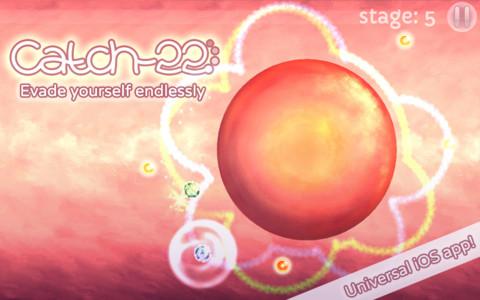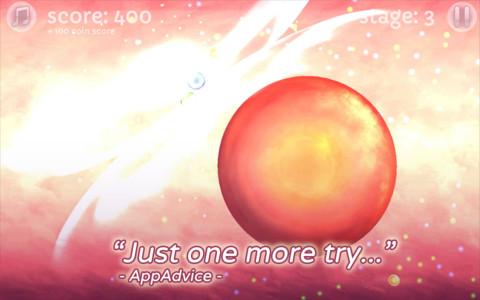- Wondering how to get Monopoly GO! free rolls? Well, you’ve come to the right place. In this guide, we provide you with a bunch of tips and tricks to get some free rolls for the hit new mobile game. We’ll …
Best Roblox Horror Games to Play Right Now – Updated Weekly
By Adele Wilson
Our Best Roblox Horror Games guide features the scariest and most creative experiences to play right now on the platform!The BEST Roblox Games of The Week – Games You Need To Play!
By Sho Roberts
Our feature shares our pick for the Best Roblox Games of the week! With our feature, we guarantee you'll find something new to play!Type Soul Clan Rarity Guide – All Legendary And Common Clans Listed!
By Nathan Ball
Wondering what your odds of rolling a particular Clan are? Wonder no more, with my handy Type Soul Clan Rarity guide.
Catch-22 Review
Catch-22 has me mesmerized, and I can’t figure out why. Part twitch arcade title, part puzzle, part Impressionist painting, it’s caught somewhere between addictive and otherworldly. In fact, it’s the kind of experience I don’t even want to ruin by attempting to pigeonhole it into a rating, and a simplified list of pros and cons. I wish there was a phrase to describe this kind of predicament.

Keep your eye on the balls
Catch-22 has me mesmerized, and I can’t figure out why. Part twitch arcade title, part puzzle, part Impressionist painting, it’s caught somewhere between addictive and otherworldly. In fact, it’s the kind of experience I don’t even want to ruin by attempting to pigeonhole it into a rating, and a simplified list of pros and cons. I wish there was a phrase to describe this kind of predicament.
Of note when you boot up the game is its approach to instructions. Namely, the fact that there are none. Catch-22 is an exercise in discovery. Two glowing marbles are rotating around what seems like a red planet, itself floating aimlessly against the backdrop of a crimson sky. Or is it a nebula? No time to figure it out, it seems, as the marbles have collided and shattered. Hm. On the next approach, a quick tap reveals that you’re controlling the blue marble; making it jump, with its trail of chalk-like smoke following you into the air as it arches above its green counterpart.

Well, this is rather boring. Just jumping like this. Unless…what is that other orb, careening around, as if caught in an irresistible gravitational pull? You jump again, this time connecting in mid-air, celebrating with a second jump when you hit the — wait a minute, what? Now you’re the green marble!? And on and on it goes, your identity switching every time you collect the growing number of golden orbs. The catch being, of course, that the marble you once were continues along the foggy path you made for it; a fugue of motion. A never ending dance.
And I can’t imagine better music to which your mind could waltz. Developer Mango Down! crafts a soundtrack that – far from elevator music – builds an entire world around your simple actions. Filled with the deft, impermanent dings of a xylophone, paired effortlessly with the swelling melodies offered by a piano and violin, the looping track tinkles along until it rises to an ethereal crescendo. Then, seamlessly, it starts again; like the marbles, it has no origin. No end.
As relaxing as the world of Catch-22 is to play in, it too has hidden depths. By the same token, the game is an exercise in split second avoidance and deeper thought. Grabbing all the orbs unscathed is certainly a matter of timing – of letting the rhythms of your rotation and circumference of the planet sink in, and understanding exactly when you can afford to jump and when you can’t. Long term survival, however? That shares more qualities with chess. Calculating the most efficient set of jumps to swap from one marble to the next; planning your hops to allow for a perfect crossing of paths, rather than a head on collision; and, most frustratingly at times, watching the path of the marble you don’t control more than the path of the one you do.

The highest compliment I can pay to Catch-22 is that it feels like it was ripped right from the universe of the Rand and Robyn Miller’s Myst. For what little the game suffers from an occasional feeling that everything’s moving a little too slow – too unresponsively – it more than compensates with ambience and clever design. There is brilliance in simplicity here. More juxtaposition than contradiction. In fact, the only catch-22 left might be the fact that while you were reading this, you should have been playing.

The good

The bad
More articles...
Monopoly GO! Free Rolls – Links For Free Dice
By Glen Fox
Wondering how to get Monopoly GO! free rolls? Well, you’ve come to the right place. In this guide, we provide you with a bunch of tips and tricks to get some free rolls for the hit new mobile game. We’ll …Best Roblox Horror Games to Play Right Now – Updated Weekly
By Adele Wilson
Our Best Roblox Horror Games guide features the scariest and most creative experiences to play right now on the platform!The BEST Roblox Games of The Week – Games You Need To Play!
By Sho Roberts
Our feature shares our pick for the Best Roblox Games of the week! With our feature, we guarantee you'll find something new to play!Type Soul Clan Rarity Guide – All Legendary And Common Clans Listed!
By Nathan Ball
Wondering what your odds of rolling a particular Clan are? Wonder no more, with my handy Type Soul Clan Rarity guide.







